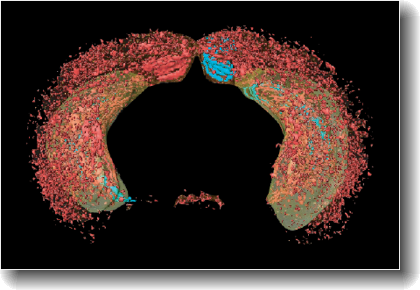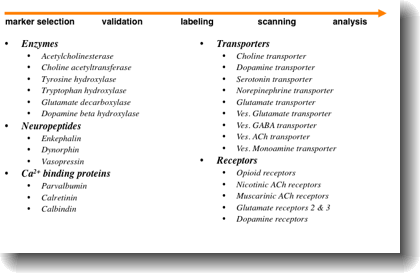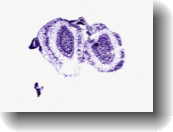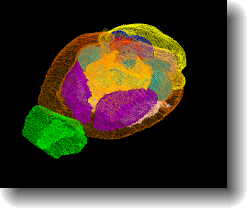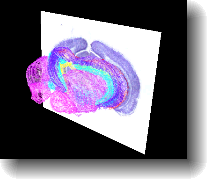Neuroinformatics
BrainArchive - Storing the Brains
Client - Neurome, Inc.
(Circa 2002) BrainArchive is a comprehensive database of neuroinformation, BrainArchive is an electronic brain "atlas" for archiving, integration and comparison of brain structure and circuitry data.
Features:
- Standardized Data Model
- Hierarchical or Structural Context
- Network or Circuitry Context
- Standardized Atlas Nomenclature
- Digitally acquire and display qualitative and quantitative data of gene expression in the mouse brain for 100 genes in 100 brain regions.
- Characterize the location of neurotransmitter systems and their components in the baseline mouse strain (C57)
- Identify and quantify differences or changes in other mouse strains and under abnormal conditions
The reference brain C57 is displayed below as a movie:
Once the sections are aligned and stored in the database, they may be refactored into other planes for orthogonal viewing and analysis.
The structured that are located in BrainArchive are easily navigated with software controls.
With properly segmented brain regions and structures, additional gene expression data can be visualized from BrainArchive.
Gene expressions can be visualized in full 3D.
The emtire database is modular and interacts with the other neuroinformatics tools.
Advantages are:
- Sophisticated Data Model
- Supports images, structure, circuits
- Fully integrated into instruments and business
- XML Used for Transport
BrainArchive is a comprehensive database of neuroinformation and serves as an electronic brain atlas for archiving, integrating and comparing brain structure and circuitry data from NeuroZoom Pro. Reference brains from several transgenic mouse models have been imaged and aligned with high precision and ultra-high resolution using NeuroZoom Pro. BrainArchive presents virtual sections from its electronic brain atlas, digitally displaying both qualitative and quantitative gene expression data acquired from the mouse brain.
Features
- Standardized Data Model
- Hierarchical or Structural Context
- Network or Circuitry Context
- Standardized Atlas Nomenclature
Advantages
- Sophisticated Data Model
- Supports images, structure, circuits
- Fully integrated into instruments and business
- XML Used for Transport
